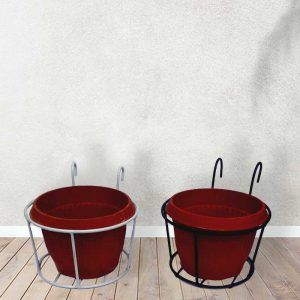Termites are tiny insects that can cause big problems in your home or business. These pesky critters can eat away at the wooden structures of your property, causing extensive damage that can be costly to repair.
When it comes to dealing with a termite infestation, there are two options available: DIY termite control or professional termite control. In this article, we’ll explore the pros and cons of each option to help you decide which approach is best for you.

What is the Best Option? DIY vs Professional Termite Control
Termites are a common pest that can cause significant damage to wooden structures in your home or business. While some people may try to tackle a termite infestation on their own, others prefer to call in professional help.
Both DIY and professional termite control methods have their pros and cons, and it’s essential to understand these before deciding which approach to take.
Understanding Termites
Before we dive into the pros and cons of DIY and professional termite control, it’s crucial to understand what termites are and how they can cause damage. Termites are insects that feed on wood and other cellulose-based materials.
They live in colonies and can quickly infest a structure if not treated promptly. Termites can cause extensive damage to wooden structures, including floors, walls, and even the foundation of a building.
3. DIY Termite Control
DIY termite control involves treating the termite infestation on your own, without the help of a professional. While this approach can save you money, it also requires more effort and time than professional termite control. Here are some methods commonly used in DIY termite control:
3.1 DIY Termite Control Methods
- Bait stations: These are small containers filled with a substance that attracts termites. Once the termites consume the bait, they carry it back to the colony, where it spreads and eliminates the entire colony.
- Liquid termiticides: These are chemical solutions applied to the soil around the structure, creating a barrier that repels termites. This method can be effective but requires careful application to avoid contaminating the surrounding environment.
- Borate-based products: These are chemicals that are sprayed or brushed onto wooden structures, creating a protective barrier against termites.
3.2 Pros of DIY Termite Control
- Cost-effective: DIY termite control methods can be significantly cheaper than professional termite control.
- Convenience: You can treat the infestation at your own pace, without having to schedule appointments with a professional.
- Empowerment: Some homeowners prefer the satisfaction of dealing with the problem themselves, rather than relying on someone else.
3.3 Cons of DIY Termite Control
- Risk of failure: DIY termite control methods may not be as effective as professional methods, leading to a continued infestation and further damage.
- Risk of harm: Some DIY termite control methods involve the use of chemicals that can be harmful to people and pets if not used correctly.
- Limited knowledge: Without professional training, you may not be aware of all the potential risks and ways to effectively eliminate the infestation.
4. Professional Termite Control
Professional termite control involves hiring a trained professional to treat the termite infestation. This approach can be more expensive than DIY termite control but is often more effective in eliminating the infestation. Here are some methods commonly used in professional termite control:
4.1 Professional Termite Control Methods
- Liquid termiticides: Professionals use specialized equipment to apply termiticides to the soil around the structure, creating a barrier that repels termites.
- Fumigation: This involves covering the entire structure with a tent and fumigating it with a gas that kills termites.
- Heat treatments: This involves heating the structure to a temperature that kills termites, using specialized equipment.
- Bait stations: Professionals use specialized bait stations that are more effective than those available to homeowners.
4.2 Pros of Professional Termite Control
- More effective: Professional termite control methods are often more effective than DIY methods, eliminating the infestation and preventing further damage.
- Safer: Professionals are trained to use chemicals and equipment safely, reducing the risk of harm to people and pets.
- Comprehensive: Professionals have the knowledge and experience to identify and treat all areas of the infestation, ensuring complete elimination.
4.3 Cons of Professional Termite Control
- More expensive: Professional termite control can be significantly more expensive than DIY methods.
- Less control: You will need to schedule appointments with a professional and may not have as much control over the treatment process.
- Requires more preparation: Some professional termite control methods, such as fumigation, require extensive preparation and can be disruptive to your daily life.
Factors to Consider
When deciding between DIY and professional termite control, there are several factors to consider, including:
- The severity of the infestation
- The cost of the treatment
- The amount of time and effort you are willing to invest
- The potential risks and safety concerns
It’s essential to weigh these factors carefully and consult with a professional if you are unsure which approach to take.
Conclusion
Dealing with a termite infestation can be a stressful and challenging experience. While DIY termite control methods can be cost-effective and empowering, they may not be as effective as professional methods, and there is a higher risk of failure and harm.
Professional termite control may be more expensive, but it is often more effective and safer. Ultimately, the decision of which approach to take depends on several factors, including the severity of the infestation and the amount of time and effort you are willing to invest.
FAQs
-
Can I treat a termite infestation on my own?
It is possible to treat a termite infestation on your own with DIY methods, but it is important to understand that these methods may not be as effective as professional methods.
Additionally, if the infestation is severe, DIY methods may not be sufficient to completely eliminate the infestation.
-
How do I know if I have a termite infestation?
There are several signs of a termite infestation, including:
Piles of discarded wings near windows or doors
-Mud tubes on exterior walls or in crawl spaces
-Hollow sounding wood
-Cracked or bubbling paintIf you suspect a termite infestation, it is important to have a professional inspection to confirm and determine the severity of the infestation.
-
What are the signs of termite damage?
The signs of termite damage include:
-Hollow sounding wood
-Buckling or sagging floors
-Crumbling drywall
-Loose tiles or laminate flooring
-Visible mazes or tunnels in wood -
How much does professional termite control cost?
The cost of professional termite control varies depending on several factors, including the severity of the infestation and the method of treatment.
On average, professional termite control can cost anywhere from several hundred to several thousand dollars. -
How long does it take to eliminate a termite infestation with professional treatment?
The time it takes to eliminate a termite infestation with professional treatment depends on several factors, including the severity of the infestation and the method of treatment.
In general, it can take anywhere from several weeks to several months to completely eliminate a termite infestation with professional treatment.

Dr. Ahmed is a renowned entomologist with over 20 years of experience in studying insects. He obtained her Bachelor’s degree in Biology from the University of Punjab, and then completed his Master’s and Ph.D. in Entomology from the University of the Punjab.
Dr. Ahmed has conducted extensive research on the behavior, ecology, and evolution of insects. His work has been published in numerous peer-reviewed scientific journals and has been presented at international conferences. He has also served as a consultant for various organizations, including government agencies and private companies.







 Single Plastic Pot with Iron Hanger
Single Plastic Pot with Iron Hanger 